The Power and Perils of Power Washing
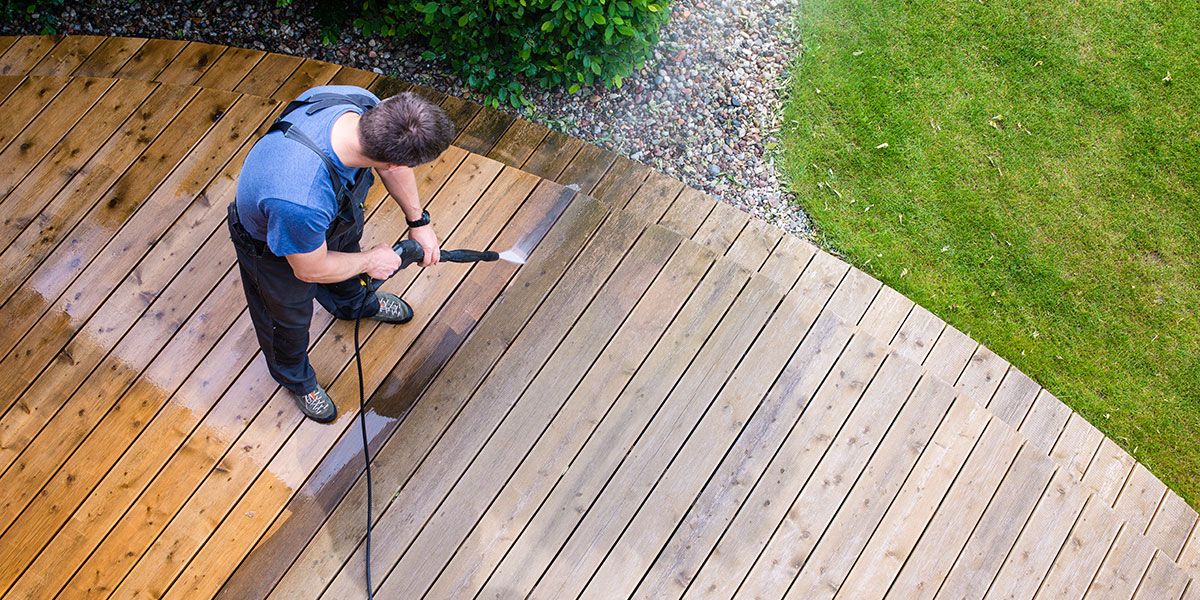
Transforming a tranquil garden hose stream into a high-velocity jet blasted through a spray wand at 30 to 80 times its normal pressure is exhilarating—especially when cleaning results are instant and dramatic. You may leap to pressure wash all your outdoor surfaces, yet not every surface tolerates the water’s pummel. Terms often used interchangeably, power and pressure washing are both high-pressure cleaning processes; however, power washing delivers hot water for a more intensive deep clean, while pressure washing cleans with water at faucet temperature, tackling everyday cleaning projects well. Both methods erase heavy dirt, grime, algae and mold from your walkways, driveway, patio, deck and house, reviving your property’s shimmer and shine. But they can wreak havoc if used fecklessly, without vigilant caution and care.
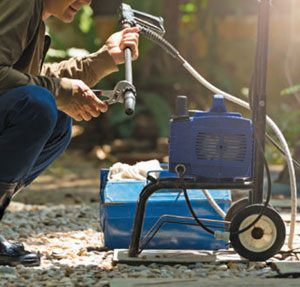 The physics of GPM and PSI
The physics of GPM and PSI
Pressure washing equipment shoots hose water, measured in gallons per minute (gpm), through a pump powered by electricity or gas which compresses its pressure, measured in pounds per square inch (psi). A higher gpm and psi signal greater velocity. Electric pressure washers emit a jet with a 1½ gpm and 500 psi to 2,000 psi, ideal for lighter cleaning tasks. Gas pressure washers notch the water release up to 2-3 gpm and the pressure to 2,000 psi to 3,000 psi, suitable for heavier-duty jobs. Depending upon whether powered by electricity or pricier gas, a pressure washer for the DIY home cleaner costs between $100 and $600; renting one averages $40 to $100 per day. Commercial gas pressure washers fetch between $1,000 and $6,000.
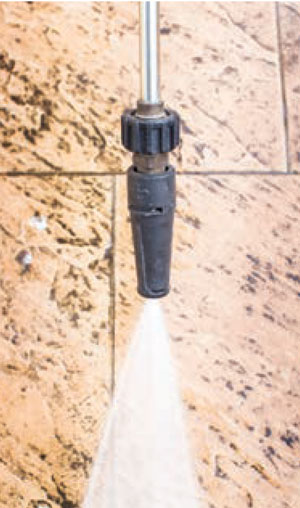 A nozzle for every cleaning job
A nozzle for every cleaning job
Pressure washing machines feature a nozzle that inserts into the spray wand and controls the jet’s surge. Some have an adjustable color-coded nozzle that sprays a 0-to-60-degree fan pattern, 0 degree being the highest velocity and 60 degree the lowest; others boast a rotating multi-spray nozzle that spins the water stream. Different surfaces and cleaning jobs require different nozzle settings. Medium velocity 25-degree and 40-degree nozzle settings work well for general cleaning, while the lowest velocity 60-degree level sprays the widest sheet of water, perfect for detergent cleaning. Rarely used because of the damage its force produces, the narrowest 0-degree setting severely restricts the water flow and maximizes its pressure.
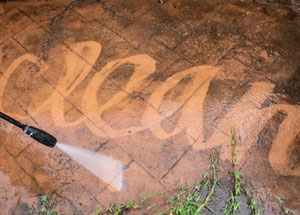 Preparing for pressure washing
Preparing for pressure washing
When getting ready to pressure wash, you’ll want to prepare your property. Note the location of windows, fixtures and electrical outlets; sweep to eliminate flying debris; and protect plants and shrubs with drop cloths. Your garden hose should be free of kinks and holes, extend 50 feet long or a little less, be ¾-inch in diameter, and sport a ¾-inch hose connection for the machine outlet. If you’re pressure washing with a detergent, research which is best for the surface you’re cleaning and whether it has an Environmental Protection Agency’s “Safer Choice” label, indicating that agency has evaluated its impact on humans and the environment.
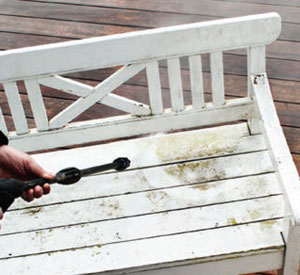 What to pressure wash
What to pressure wash
With appropriate technique, pressure washing safely and efficiently cleans many surfaces. These include house siding, walkways, driveways, garage floors, patios and patio furniture with cushions whose covers can’t be machine washed. Each surface composition demands a unique pressure, nozzle setting and spraying distance. It’s best to begin with the lowest-pressure nozzle setting, standing a safe 6-8 feet from the surface and testing the jet on a small section, and then adjust as needed. Some surfaces—like asphalt roofs, old brick and mortar structures, and older wooden decks—cannot withstand pressure washing. If pressure washing an asphalt roof, you’ll likely tear the shingles and could topple from the ladder when the spray wand recoils. Pressure washing a car may chip its paint, and a high-velocity jet can shatter windows and break light fixtures. In these cases, old-fashioned handwashing and garden-hose rinsing are stalwart remedies.
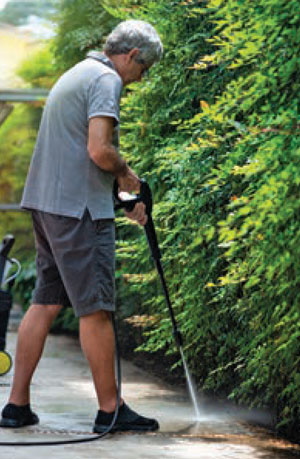 Power washing precautions
Power washing precautions
The jet from a spray wand explodes like a bullet, so it’s critical to protect yourself, your family and pets, and your property from its force. You’ll be wise to wear safety eyeglasses, ear plugs, thick gloves, sturdy steel-toed shoes, a long-sleeved shirt, and long pants. Never point the pressure washer at people or pets nor put your hand in front of the nozzle, as the high-velocity jet can sear skin and sever fingers and toes.
Pressure washing delivers dramatic cleaning results that seem magical because they are instant, saving hours of manual cleaning. If managed cavalierly, however, the high-velocity jet blasting from the spray wand can damage property and imperil people and pets, warning of a darker side to the magic of pressure washing. ✦
gallons per minute, GPM, high-pressure cleaning processes, high-velocity jet, power washing, pressure washing, PSI






